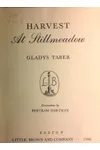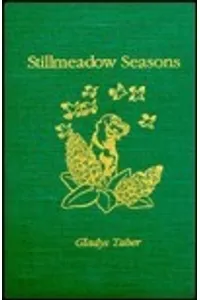Step into the cozy world of Stillmeadow, where the charm of rural New England unfolds like a warm quilt on a crisp autumn evening! The Stillmeadow series, penned by Gladys Taber, invites readers to a 17th-century Connecticut farmhouse, brimming with homespun wisdom, earthy humor, and the simple joys of country life. From tending gardens to baking bread, Taber’s memoirs capture a mid-20th-century escape that feels like a hug from a dear friend.
With over twenty books, including delightful cookbooks, this series is a love letter to nature, community, and the rhythms of the seasons. Whether you’re craving a break from today’s hustle or a dose of timeless inspiration, Stillmeadow is your ticket to a slower, sweeter world.
How Stillmeadow Began
In the 1930s, Gladys Taber, a prolific writer and New York City dweller, yearned for a simpler life. Alongside her friend Eleanor Sanford Mayer, she purchased a dilapidated 1690 farmhouse in Southbury, Connecticut, for $30,000. What started as a weekend retreat became a full-time haven, inspiring Taber’s beloved ‘Diary of Domesticity’ column in Ladies’ Home Journal. Her columns blossomed into the Stillmeadow series, starting with Harvest at Stillmeadow in 1940, as she chronicled the joys and challenges of rural living.
Taber’s knack for noticing life’s small wonders—blooming lilacs, frolicking cocker spaniels, or a neighbor’s kind gesture—shaped her writing. Her memoirs, infused with warmth and wit, offered readers a refuge during the Great Depression and beyond, cementing Stillmeadow as a symbol of resilience and community.
The Heart of Stillmeadow
The series’ cornerstone, Harvest at Stillmeadow, weaves excerpts from Taber’s 1937–1940 columns into a seasonal tapestry of farmhouse life, from canning peaches to savoring snowy evenings. The Book of Stillmeadow follows, with monthly chapters from November to October, painting vivid scenes of gardening, raising dogs, and cherishing family. Stillmeadow Sampler, published in 1959, strolls through the seasons with reflections on nature and neighbors, while Stillmeadow and Sugarbridge, a collection of letters with Barbara Webster, celebrates rural camaraderie across Connecticut and Pennsylvania.
Taber’s themes revolve around appreciating life’s fleeting moments—think fresh-baked pies or a sunset over the fields. Her style, conversational yet poetic, transforms chores into rituals and the farmhouse into a living character. The setting, with its creaky stairs and blooming meadows, grounds the series in New England’s timeless beauty, making every page a sensory escape.
Whether she’s sharing recipes or musing on community, Taber’s earthy humor and wisdom shine. Her books don’t rush; they invite you to linger, much like a lazy afternoon at Stillmeadow. Fans adore this gentle pace, often calling the series a ‘cozy blanket’ for the soul.
Why Stillmeadow Resonates
Stillmeadow’s magic lies in its universal appeal. During tough times like the Great Depression, Taber’s stories offered hope and practicality, showing readers how to find joy in simplicity. Today, her words remain a balm for those seeking mindfulness in a frenetic world. Her granddaughter, Anne Colby, notes that Stillmeadow symbolizes ‘caring about one’s community and landscape,’ a message that echoes in conservation efforts to preserve the farm’s 40 acres.
The series’ niche status only adds to its charm. Fans, from book bloggers to cozy-read enthusiasts, treasure its old-fashioned vibe and vivid storytelling. Taber’s influence endures in the way she inspired readers to cherish the everyday, making Stillmeadow a quiet but powerful legacy in American memoir literature.
- About Stillmeadow
- First published: 1940 (Harvest at Stillmeadow)
- Total books: Over 20, including cookbooks
- Setting: Southbury, Connecticut, 1690 farmhouse
- Key themes: Simplicity, community, nature
Ready to escape to a world of blooming gardens and crackling fireplaces? Grab Harvest at Stillmeadow and let Gladys Taber whisk you to the heart of rural New England’s cozy charm!













